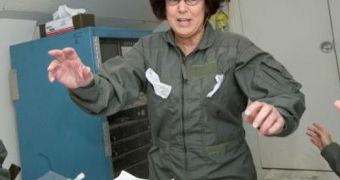Scientists from the University of Utah have recently announced the creation of a new method of assessing the quality of the water that astronauts drink in orbit. While, at first glance, the process may seem similar to what goes on down on Earth, this is not the case. For example, aboard the International Space Station, it is critically important that no astronaut catches a stomach bug. This can bring about a host of problems, and can be easily avoided if the water that is available is clean.
The new test, which only takes about two minutes to complete, is reportedly able to identify perils associated with poorly treated water, though the chances of some reaching the ISS are extremely small. The new technique developed at the UU has just begun a six-month trial period aboard the ISS. “Now they bring water back on the space shuttle and analyze it on the ground. The problem is there is a big delay. You'd like to be able to maintain iodine or silver [disinfectant] levels in real time with an onboard monitor,” UU Professor of Chemistry and Chemical Engineering Marc Porter explains.
According to its developers, the new method is simple, effective and cheap. Water is sampled from the galley aboard the ISS, and then forced by a syringe to pass through a chemically imbued disk. The membrane modifies its color depending on the chemicals inside the water. The differences between the original hues and the new ones can be read with a commercially available color sensor, such as the one regularly used to assess the brightness and glossiness of car paint.
“Our focus was to develop a small, simple, low-cost testing system that uses a handheld device, doesn't consume materials or generate waste, takes minimal astronaut time, is safe and works in microgravity,” Porter adds. Another bright side of the new technique is that it is currently being adapted for use back on Earth as well, where it could detect dangerous arsenic concentrations in drinking water. This type of tests could come in handy in places such as the US and Bangladesh, where the arsenic concentration is something to be reckoned with.
“It is a general method. It could be used on the ground for testing all kinds of water contaminants such as arsenic, chromium, cadmium, nickel and other heavy metals,” Lorraine Siperko, who is a senior researcher in Porter's lab, shares. “We can do this whole analysis in about two minutes on the ground or in space,” Porter concludes.

 14 DAY TRIAL //
14 DAY TRIAL //